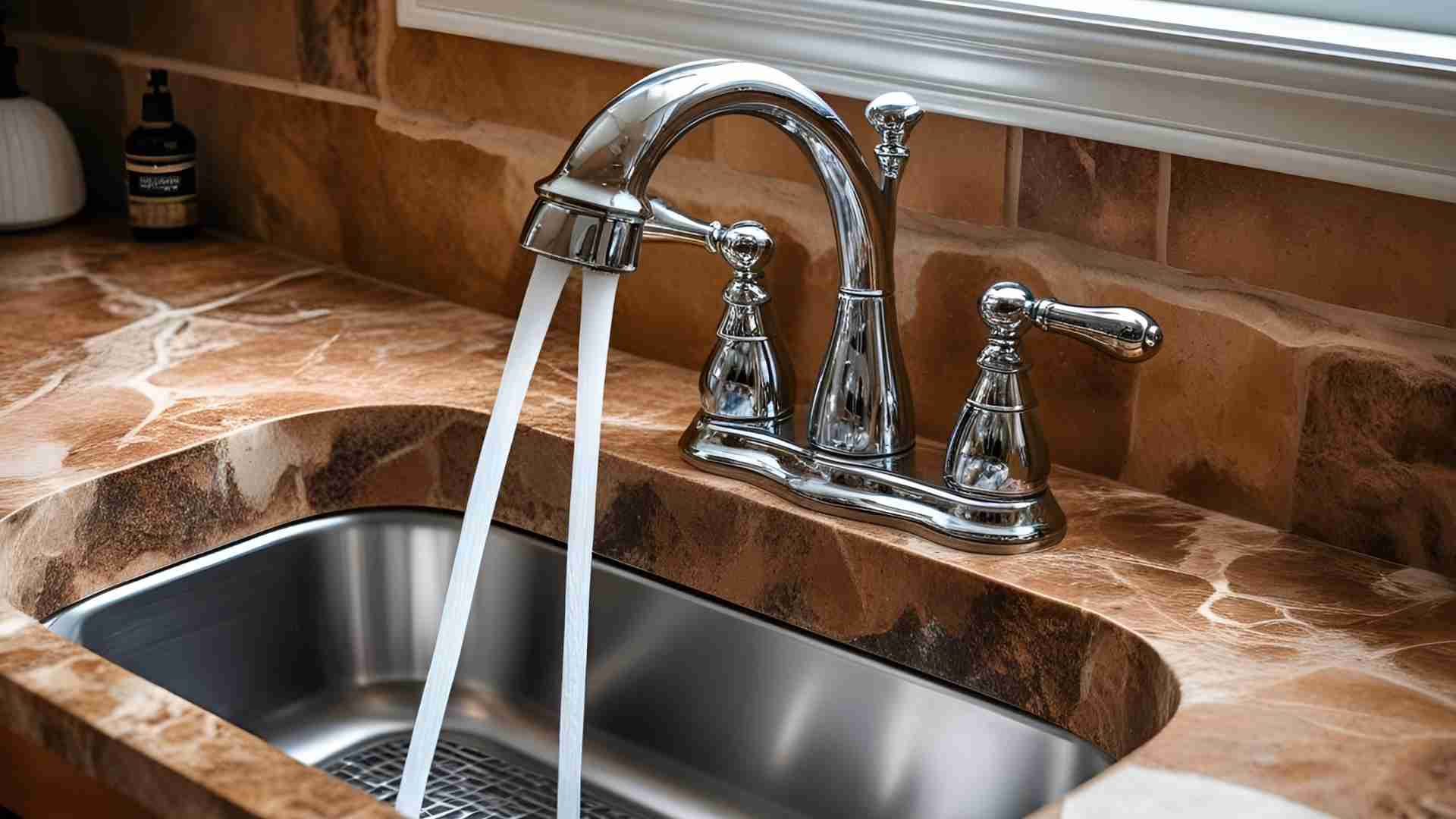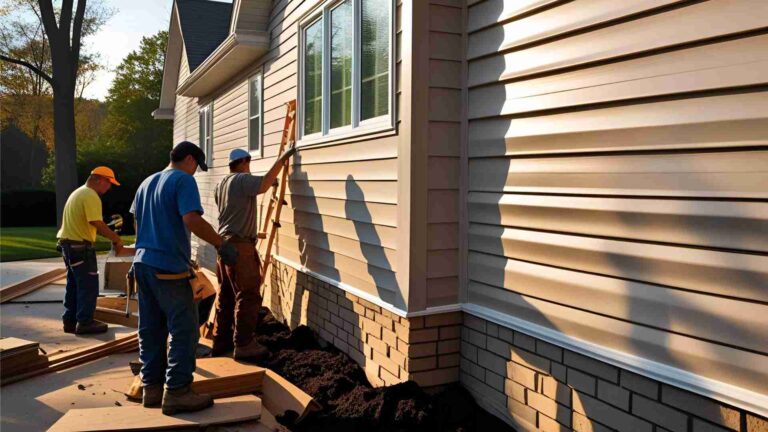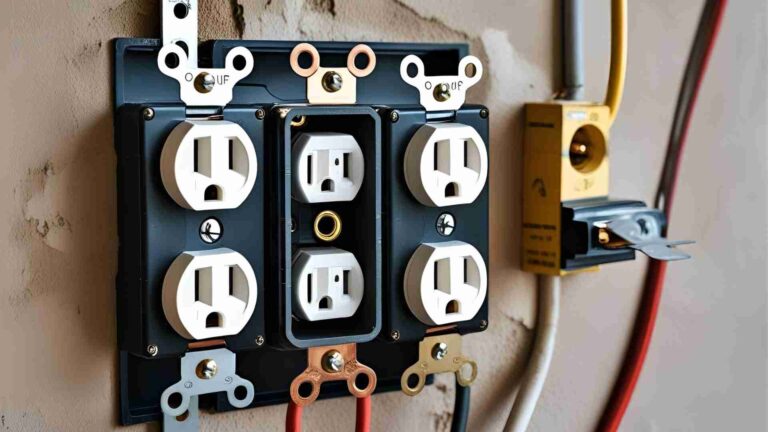Sink Faucet Hole Sizes Explained – #1 Best Guide
Renovating a kitchen or bathroom is an exciting project, but choosing the right faucet can make or break the outcome. One critical factor often overlooked is the sink faucet hole size. A mismatch between your faucet and sink holes can lead to leaks, unstable fixtures, or costly repairs. This comprehensive guide dives deep into sink faucet hole sizes, offering precise measurements, expert tips, and practical solutions to ensure a flawless installation. Whether you’re a DIY enthusiast or a homeowner planning a remodel, this guide will help you navigate faucet hole sizing with confidence.
Why Faucet Hole Sizes Matter
Faucet hole sizes are the foundation of a successful installation. According to industry surveys, nearly 40% of homeowners face installation issues due to improper hole sizing, leading to an average repair cost of $200-$500. The right hole size ensures:
- Secure Mounting: Prevents wobbling or instability.
- Leak Prevention: Ensures a watertight seal.
- Aesthetic Harmony: Creates a polished, professional look.
- Functional Efficiency: Supports optimal water flow and usability.
This guide covers standard hole sizes, measurement techniques, faucet configurations, and solutions for non-standard setups, making it your go-to resource for faucet installation.
Standard Faucet Hole Sizes: Industry Benchmarks
The plumbing industry has standardized faucet hole sizes to ensure compatibility across brands and sink types. Below is a detailed breakdown of the most common sizes and their applications.
Common Faucet Hole Diameters
- 1 3/8 inches (35mm): The most prevalent size, used for single-hole and centerset faucets in both kitchen and bathroom sinks.
- 1 1/4 inches (32mm): Common for centerset faucets, especially in compact bathroom sinks.
- 1 1/2 inches (38mm): Found in premium or widespread faucets with larger base plates for enhanced stability.
Faucet Hole Size Chart by Type
| Faucet Type | Standard Hole Size | Number of Holes | Best Applications | Installation Difficulty |
|---|---|---|---|---|
| Single-Hole | 1 3/8″ (35mm) | 1 | Small bathrooms, minimalist kitchens | Easy (★★) |
| Centerset | 1 1/4″ (32mm) per hole | 3 | Standard bathrooms, secondary sinks | Moderate (★★★) |
| Widespread | 1 1/4″–1 1/2″ (32–38mm) | 3 | Luxury bathrooms, large sinks | Challenging (★★★★) |
| Wall-Mounted | N/A (Wall installation) | 0 | Modern kitchens, vessel sinks | Expert (★★★★★) |
| Bridge Faucet | 1 3/8″ (35mm) per hole | 2 | Traditional or vintage kitchens | Moderate (★★★) |
Note: Always verify the manufacturer’s specifications, as some premium brands like Kohler may use proprietary sizes (e.g., 1 5/16″ or 33.34mm).
Brand-Specific Variations
- Moen, Delta, Jabra Sanitary: Adhere to 1 1/4″–1 1/2″ standards, ensuring broad compatibility.
- Kohler: Often uses 1 5/16″ holes with unique threading (5/8 IPS), requiring precise matching.
- Gerber: Sticks to standard 1 3/8″ for most models, ideal for DIY projects.
Pro Tip: Mixing brands without verifying hole sizes can lead to leaks or instability. Always cross-check measurements with the faucet’s installation manual.
Factors Influencing Faucet Hole Sizes
Several variables affect the required hole size for your faucet. Understanding these ensures you select a compatible fixture.
1. Sink Depth
- Standard Range: 6–12 inches, with 8–10 inches being most common.
- Impact: Deeper sinks (10–12 inches) may require larger holes (1 1/2″) to accommodate taller faucets with wider bases. Shallow sinks (6–8 inches) often pair with compact 1 1/4″ holes.
2. Faucet Base Plate Size
- Larger base plates (common in widespread or premium faucets) need bigger holes for a secure fit and balanced aesthetics.
- Example: A faucet with a 3-inch base plate may require a 1 1/2″ hole to avoid overhang or instability.
3. Faucet Design
- Single-Hole Faucets: Combine spout and handle, needing one 1 3/8″ hole.
- Widespread Faucets: Require three holes with flexible 6–12″ spacing.
- Wall-Mounted Faucets: Skip sink holes but need precise wall spacing (4–8″).
- Vessel Sink Faucets: Demand larger holes (1 1/2″) for taller, heavier fixtures.
4. Countertop Material
- Quartz/Granite (7–8 Mohs Hardness): Requires diamond-tipped tools for precise drilling.
- Stainless Steel (5.5–6.5 Mohs): Forgiving for minor adjustments but needs deburring.
- Porcelain/Ceramic (7 Mohs): Brittle, requiring slow drilling with cooling water.
- Laminate (2–3 Mohs): Needs support to prevent delamination around holes.
5. Accessory Requirements
- Additional features like soap dispensers, sprayers, or water filters require extra holes (typically 1 1/4″–1 3/8″).
Chart: Factors Influencing Faucet Hole Size
How to Measure Sink Faucet Holes Accurately
Precise measurements are critical to avoid costly mistakes. Follow this step-by-step guide to measure your sink’s faucet holes with professional accuracy.
Tools Required
- Digital Caliper: Measures diameters to 0.01mm precision.
- Digital Tape Measure: Ideal for spacing and sink depth.
- Hole Gauge Set: Confirms irregular or worn holes.
- Digital Angle Finder: Ensures alignment for multi-hole setups.
- Notebook: Records measurements for reference.
Step-by-Step Measurement Guide
- Clear the Area: Remove the old faucet, sealant, and debris for unobstructed access.
- Measure Hole Diameter: Use a digital caliper to measure the widest point of each hole. Standard sizes are 1 1/4″–1 1/2″ (31.75–38.1mm).
- Check Center-to-Center Spacing: For multi-hole sinks, measure from the center of one hole to the center of adjacent holes (4″ for centerset, 6–12″ for widespread).
- Assess Deck Thickness: Measure the sink or countertop thickness (up to 1 3/4″ for most faucets).
- Verify Alignment: Use a digital angle finder to ensure holes are level and aligned.
- Double-Check Measurements: Take multiple readings from different angles and compare with manufacturer specs.
Example: A three-hole sink with 1 3/8″ (34.93mm) holes and 4″ (101.6mm) center-to-center spacing is ideal for a centerset faucet.
Pro Tip: Record measurements in both inches and millimeters to match global manufacturer specs. Use a smartphone AR measurement app for quick checks when shopping.
Common Faucet Hole Configurations
Faucet types vary by the number and arrangement of holes required. Here’s a breakdown of the most common configurations.
Single-Hole Faucets
- Hole Size: 1 3/8″ (35mm).
- Design: Combines spout and handle in one unit.
- Best For: Small sinks, minimalist kitchens, or space-constrained bathrooms.
- Advantages: Sleek look, easy installation, minimal cleaning.
- Example Brands: Delta Trinsic, Moen Arbor.
Three-Hole (Centerset) Faucets
- Hole Size: 1 1/4″ (32mm) per hole.
- Spacing: 4″ center-to-center.
- Design: Central spout with separate hot/cold handles.
- Best For: Standard bathroom sinks, secondary kitchen sinks.
- Advantages: Versatile, fits most sink designs.
- Example Brands: Delta Lahara, Kohler Devonshire.
Widespread Faucets
- Hole Size: 1 1/4″–1 1/2″ (32–38mm).
- Spacing: 6–12″ (adjustable).
- Design: Independent spout and handles for custom positioning.
- Best For: Large sinks, luxury bathrooms.
- Advantages: Elegant, flexible installation.
- Example Brands: Moen Weymouth, Kohler Purist.
Wall-Mounted Faucets
- Hole Size: N/A (wall installation).
- Spacing: 4–8″ (model-specific).
- Design: Mounted on the wall above the sink.
- Best For: Modern kitchens, vessel sinks.
- Advantages: Saves counter space, stylish.
- Example Brands: Kohler Tone, Delta Trinsic Wall-Mount.
Bridge Faucets
- Hole Size: 1 3/8″ (35mm) per hole.
- Spacing: Two holes, connected by a decorative bridge.
- Design: Vintage-inspired with exposed piping.
- Best For: Traditional or farmhouse kitchens.
- Advantages: Unique aesthetic, durable.
- Example Brands: Kingston Brass Heritage, Pfister Ashfield.
Special Faucet Types and Considerations
Vessel Sink Faucets
- Hole Size: 1 1/2″ (38mm) for stability.
- Height Requirement: Faucet height = sink height + 4″ for clearance.
- Best For: Above-counter vessel sinks.
- Considerations: Ensure spout reaches basin center (3–5″ horizontally).
- Example Brands: Kraus Elavo, Vigo Vessel Faucet.
Mini Faucets
- Hole Size: 1 1/4″–1 3/8″ (32–35mm).
- Best For: Small bathrooms, RVs, bar sinks.
- Advantages: Space-saving, modern design, easy to clean.
- Example Brands: Peerless Choice, Gerber Mini.
Wall-Mounted Faucets
- Spacing: 4–8″ (check manufacturer specs).
- Height: Spout should extend 5–9″ to reach basin center.
- ConsiderSuc: Requires reinforced wall backing.
- Example Brands: Kohler Tone, Delta Trinsic Wall-Mount.
Dealing with Non-Standard or Extra Holes
Non-standard or extra holes can disrupt your installation. Here’s how to address common issues.
Holes Too Small
- Solution: Enlarge with a carbide-tipped hole saw (stainless steel) or diamond-tipped saw (porcelain/quartz).
- Cost: $15–$30 for DIY tools; $200–$500 for professional stone work.
- Precaution: Use water cooling and go slowly to avoid cracking.
Holes Too Large
- Solution: Use a deck plate (4–10″ wide) or hole reducer ($10–$50).
- Alternative: Choose a faucet with a wider base plate.
- Cost: $25–$120 for custom reducers.
Extra Holes
- Solution: Install hole covers ($5–$20) or accessories like soap dispensers (1 1/4″–1 3/8″).
- Finishes: Chrome, brushed nickel, stainless steel.
- Benefits: Protects holes from corrosion, enhances aesthetics.
Hole Spacing Mismatch
- Faucet Compatibility Index (FCI):
[(Existing Spacing - Standard Spacing) / Standard Spacing] × 100%- 0–10% Variation: Compatible with minor adjustments.
- 11–25% Variation: Requires deck plate or mounting kit ($25–$75).
- 26%+ Variation: Choose a different faucet or custom solution.
Example: A sink with 5″ spacing for a 4″ centerset faucet has a 25% variation, requiring a deck plate.
Drilling New Faucet Holes: Tips and Precautions
Drilling new holes may be necessary for custom installations. Follow these guidelines for safe, precise results.
Tools Needed
- Carbide or Diamond-Tipped Hole Saw: Matches sink material.
- Drill with Variable Speed: Prevents overheating.
- Spray Bottle with Water: Cools the saw and reduces dust.
- Protective Gear: Safety glasses, gloves.
Step-by-Step Drilling Guide
- Mark Hole Locations: Use a template or measure 2 1/2″ from the sink edge for stability.
- Secure the Sink: Clamp or stabilize to prevent movement.
- Drill Slowly: Apply gentle pressure, pausing to clear debris.
- Cool the Saw: Spray water to prevent overheating.
- Check Thickness: Aim for 1/4″–1/2″ for structural integrity.
- Deburr Edges: Smooth sharp edges with a file.
Precaution: For porcelain or stone, hire a professional to avoid cracks ($200–$800 repair cost).
Accessory Hole Requirements
Accessories enhance functionality but require specific hole sizes.
| Accessory | Hole Size | Purpose |
|---|---|---|
| Soap Dispenser | 1 1/4″–1 3/8″ | Reduces counter clutter |
| Water Filter Spout | 1″–1 3/8″ | Delivers filtered water |
| Instant Hot Spout | 1 3/8″ | Provides instant hot water |
| Air Gap | 1 1/4″–1 3/8″ | Prevents backflow (required in some states) |
| Air Switch | 1 3/8″ | Controls garbage disposal |
| Side Sprayer | 1 1/4″–1 3/8″ | Enhances cleaning flexibility |
Placement Tips:
- Center the faucet spout for aesthetics and function.
- Place glass fillers or hot spouts at the sink’s far end.
- Position air switches near the faucet for easy access.
- Keep air gaps near the sink bowl to catch overflow.
Faucet Installation Checklist
Ensure a perfect fit with this comprehensive checklist:
- Measure hole diameter with calipers (±0.7mm tolerance).
- Confirm spacing (4″ for centerset, 6–12″ for widespread).
- Verify vertical alignment with a digital level (<1° deviation).
- Check surface flatness (<0.1mm variation).
- Ensure 3″ clearance for supply lines and handles.
- Test for leaks and consistent water flow post-installation.
Common Installation Mistakes to Avoid
Avoid these pitfalls to save $200–$800:
- Ignoring Spacing: Installing a 4″ centerset in an 8″ widespread setup causes leaks ($150–$300).
- Wrong Material Tools: Drilling porcelain without diamond bits risks cracks ($400–$800).
- Skipping Measurements: Incompatible faucets require reinstallation ($100–$200).
- Neglecting Clearance: Obstructed supply lines need rerouting ($75–$200).
- Forcing Components: Damages fixtures, creating hidden leaks ($100–$300).
Pricing and Specifications for Popular Faucets
| Brand/Model | Type | Hole Size | Price (USD) | Features |
|---|---|---|---|---|
| Delta Trinsic | Single-Hole | 1 3/8″ | $150–$250 | Pull-down sprayer, touchless option |
| Moen Arbor | Single-Hole | 1 3/8″ | $200–$300 | MotionSense, high-arc spout |
| Kohler Devonshire | Centerset | 1 1/4″ (3 holes) | $180–$280 | Ceramic valves, 4″ spacing |
| Moen Weymouth | Widespread | 1 1/2″ (3 holes) | $400–$600 | 6–12″ spacing, luxury finish |
| Kohler Tone Wall-Mount | Wall-Mounted | N/A | $300–$500 | 5–9″ reach, modern design |
| Kraus Elavo Vessel | Vessel | 1 1/2″ | $200–$350 | Tall spout, ceramic construction |
Note: Prices vary by finish and retailer. Check x.ai/grok for SuperGrok subscription details or x.ai/api for API access.
Frequently Asked Questions
Yes, use a deck plate to cover unused holes for a seamless look.
Install a hole reducer or choose a faucet with a wider base plate.
Yes, but use material-specific tools (carbide for stainless, diamond for porcelain). Hire a professional for stone sinks.
1–4, depending on features like sprayers or soap dispensers.
No, but 1 1/4″–1 1/2″ covers most standard faucets. Always check specs.
Conclusion: Mastering Faucet Hole Sizes for a Flawless Installation
Understanding sink faucet hole sizes is crucial for a successful kitchen or bathroom renovation. By measuring accurately, selecting the right faucet, and addressing non-standard holes, you can achieve a secure, leak-free, and visually appealing installation. Standard sizes (1 1/4″–1 1/2″) offer flexibility, but always verify manufacturer specs to avoid costly mistakes.
Next Steps:
- Double-check measurements before purchasing.
- Gather precision tools (calipers, hole saws).
- Plan for contingencies like extra holes or mismatched spacing.
- Explore top brands like Moen, Delta, or Kohler for reliable, stylish options.
With this guide, you’re equipped to tackle your faucet installation with confidence, ensuring a perfect fit and lasting performance.
Please share this Sink Faucet Hole Sizes Explained – #1 Best Guide your friends and do a comment below about your feedback.
We will meet you on next article.
Until you can read, York Furnace Error Codes: Understanding Flashing Lights and How to Fix Them






